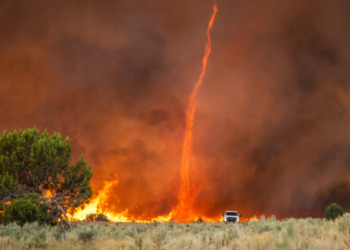A report released by the European Central Bank (ECB) last week as part of its climate action plan revealed the financial authority has developed new climate change indicators “to help analyse climate-related risks in financial sector and monitor green transition.”
“Climate change poses risks to the economy and to the stability of the financial sector. At the same time, the financial sector will have to play a role in supporting the transition to a net-zero economy,” states the ECB in the report.
In the report, the ECB reiterated its commitment to addressing climate change, explaining that that “high-quality data” as well as “aggregate indicators” are required to do this effectively.
“We need a better understanding of how climate change will affect the financial sector, and vice versa. For this, the development of high-quality data is key,” said Isabel Schnabel, a member of the ECB’s Executive Board, adding:
“The indicators are a first step to help narrow the climate data gap, which is crucial to make further progress towards a climate-neutral economy.”
The ECB’s climate indicators
In July 2021, the ECB announced a new action plan to “include climate change considerations in its monetary policy strategy.” These new statistical indicators on climate change form part of this action plan.
The three new areas of climate indicators (which are either experimental or analytical) developed by the ECB are:
- “Experimental indicators on sustainable finance”
- “Analytical indicators on carbon emissions financed by financial institutions”
- “Analytical indicators on climate-related physical risks”
The “sustainable finance” indicators give an insight into debt instruments labelled by issuers as “green”, “social”, “sustainability” or “sustainability-linked,” increasing transparency and helping monitor progress towards a net-zero economy.
The “carbon emissions financed by financial institutions” indicators give an insight into the carbon intensity of financial institutions’ securities and loan portfolios (providing information on the emissions the financial sector is financing) as well as the “exposure of the financial sector to emission-intensive counterparties.”
The “climate-related physical risks” indicators will help to quantify the physical risks faced by the financial system, analysing the impact that seven acute natural hazards (coastal flooding, river flooding, wildfires, landslides, subsidence, windstorms, water stress) may have on loans, bonds and equities portfolios’ performance.
Though vital for research in this area, the ECB has stated that there are also some challenges associated with the indicators at present.
“The ECB, together with the national central banks, will work to improve the methodology and the data used,” states the ECB.
For example, one of challenges associated with the carbon emissions indicator, is the “general lack of consolidated and unconsolidated corporate emissions data,” states the ECB. Furthermore, when it comes to the the physical risks indicator, the ECB states that these indicators may “come with caveats which might lead to under or overestimation of risk.”
The ECB describes the indicators as “a work in progress” intended to open dialogue on how data collection on climate-related risks and the green transition can be improved, advising they should be used with caution at present.
“Today’s publication of new climate-related indicators is another step towards delivering on the ECB’s climate commitments,” states the ECB.
— —
Correction: This article (including the title and subtitle and subheadings) has been entirely reworked, refocused and substantially shortened (including content and overall message) to solely focus on the European Central Bank’s new climate indicators report to avoid any possible misunderstanding or unfair assumptions, generally, or in relation to individuals, organisations, industries or countries.
Editor’s Note: The opinions expressed here by Impakter.com columnists are their own, not those of Impakter.com — In the Featured Photo: Plant growing out of coins. Featured Photo Credit: micheile dot com/Unsplash










